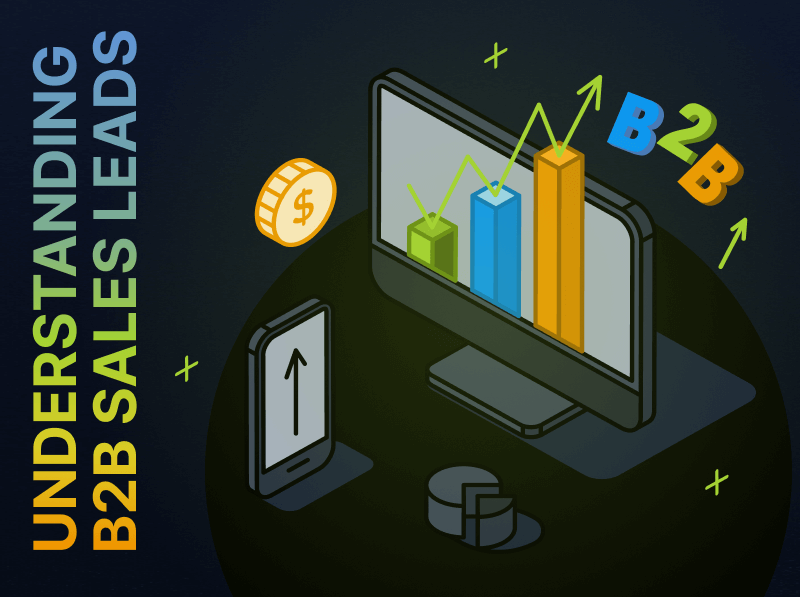How to Spot a Bad Lead
Demand Marketers are facing immense pressure in the current economic climate to meet ever-increasing lead targets. As a result of these challenges, quality often falls by the wayside as marketers focus on generating quantity. But not all your demand programs will produce leads that are ready to buy. Bad data cripples businesses both large and small, as they fight to pinpoint the good leads, from the one’s that will cost them money, time and credibility.
The Difference Between the Good Leads, and the Bad
It’s all too easy to view lead generation as a numbers game. Making sure that your demand generation efforts provide leads that meet a certain quality level is vital to the continued success of your business. There’s nothing more frustrating than paying for bad leads. But they don’t just cost you financially. They also create inter-departmental rifts and damage your brand experience and reputation.
So, what is the difference between a good and a bad lead?
In universal terms, good leads have the capability and motivation to do business. They meet specific contact criteria, match target accounts and have an interest in your area of expertise or solution set.
In order to determine what a good lead looks like to your business; you need to determine your Ideal Customer Profile (ICP). This describes the persona of what your ideal customer looks like, and includes criteria to be met against factors such as:
- Job title
- Influence on purchasing
- Industry
- Geography
- Organization size
When it comes to bad leads, there are some common criteria that they fall into. These people often have unrealistic expectations or budgets, lack of a concrete timeline, or even an ambiguous understanding of what they need and how your business may be of value.
At Integrate, we categorized 5 types of bad leads that hit your database:
- Incomplete: These leads lack enough data to be marketable and require additional data to make them actionable. Without all the required data, marketers can’t qualify and route leads or take the appropriate actions to content offers, nurturing and/or sales follow-up.
- Invalid: These leads contain non-working email addresses, fake phone numbers, inaccurate job titles or untargeted/unsuitable audiences. List buys, which have many challenges, often contain bad data because of unverified contact and account information.
- Non-Compliant: These leads have complete, valid and non-duplicate data, but were captured in a manner that doesn’t comply with regional laws or specific country regulations, or you have not acquired opt-in permission to contact them.
- Unstandardized: These leads look great at first glance. They contain valid contact information and meet your target audience or ICP. However, their field formatting renders them a time-suck to manually fix or unmarketable when the data is routed to your marketing automation or CRM system for follow-up.
- Duplicates: Duplicate leads are separate, multiple records for the same individual. Depending on your view, duplicates can be good or bad. They are good because you want to capture the engagement activity from individuals and it also may indicate higher buying interest. They can be bad if your view is “we already have that contact or lead.”
Factors to Consider When Qualifying Leads
Being able to tell whether a lead is worth pursuing with your time and resources is a tricky challenge for marketers. Qualification methods ensure your demand generation efforts are producing high-quality leads that you can prioritize, qualify and nurture to conversion.
Most sales and marketing teams know the traditional method of assessing a lead with BANT:
- Budget
- Authority
- Need
- Timeline
However, the world has changed a lot since BANT was introduced. Today, there are multiple decision-makers that you need to deal with throughout the buyer journey. There were also flaws noted in the methodology behind prioritising budget over everything else. Sales and marketing teams know the need, or challenge, that the company is facing, is really the first area that needs to be met.
A more advanced method that meets the needs of today’s buyers is CHAMP:
- Challenges
Just because someone downloads your latest eBook on social trends, it doesn’t mean they are trying to solve the challenges your social posting tool provides. You need to determine if your product or service is the best fit for their challenge.
Collecting enough information allows you personalise nurture campaigns, add value, while asking the right questions at the right time can help you understand if/when a prospect is ready to buy.
- Authority
While it might be easier to get your content in front of the new marketing assistant, does that person have influence within the buying group or the power to make decisions and sign-off on the budget?
If you’re having trouble connecting with the right decision-makers, it might be time to re-evaluate your strategy to better align content and messaging with your target audience.
- Money
They say money isn’t everything. But, when a prospect can’t afford what you’re offering, it’s rather important. You’ve worked hard building the perfect solution and designing it for a specific target audience, so being out of budget-range isn’t always a bad thing. If a lead can’t afford your solution to their challenge, there is no use wasting effort trying to entice them further down the funnel.
- Prioritization
Potential buyers seek out solutions because they are facing a challenge. They are likely seeking out multiple answers at any one time.
While B2B buyer journeys can often be months long, understanding where the importance of the problem you are looking to solve compares to other priorities within their business will allow you to focus efforts on those looking to convert sooner rather later. Prospects that are actively looking for a solution are more likely to engage with your communications and content focused around solving their challenge.
Summary
Being confident that the data that hits your CRM or Marketing Automation Systems is high-quality not only reduces the financial costs of your demand generation efforts but also helps build stronger relationships with your sales teams. By passing them good leads that meet your target accounts and are complete, valid and compliant, your sales teams can spend more time nurturing and converting prospects, rather than cleaning and filtering data.
Knowing what your ICP looks like and identifying the criteria that meet your business’ definition of a high-quality lead, you can take the first step in creating an efficient lead-generation machine.
So how do we still see expensive and time-intensive demand programs still delivering bad leads that miss the mark?
Unfortunately, many marketers and senior leaders are still unaware of the hidden costs and negative impact bad leads have on their business and revenue-generation efforts.
That’s why we pulled together ‘The Cost of a Bad Lead 2020 – Demand Marketers Guide’. Full of tools and insights to help you squash the bad data problem, we explore:
- What is a good lead
- What makes a lead bad
- How to calculate the costs of a bad lead
- What are the hidden costs of bad leads
To learn more, download our Cost of a Bad Lead 2020 – Demand Marketers Guide today.









